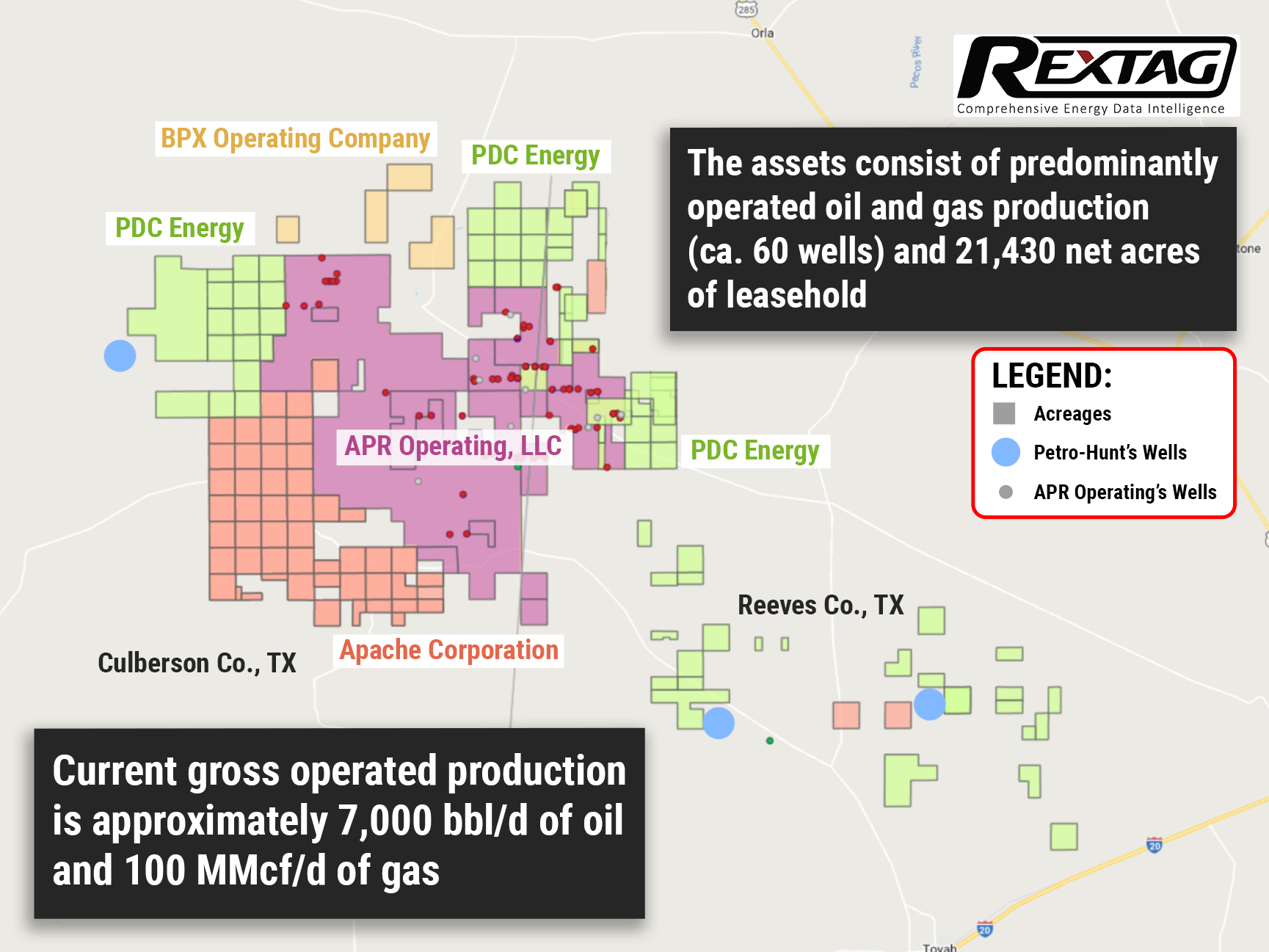Comprehensive Energy Data Intelligence
Information About Energy Companies, Their Assets, Market Deals, Industry Documents and More...
Winds of Change: Admiral Sold Its Assets in Delaware Basin
03/17/2022
In the Delaware Basin, Petro-Hunt Permian, LLC, a wholly-owned subsidiary of Petro-Hunt, L.L.C., has acquired oil and gas production and leasehold properties in northwest Reeves and northeast Culberson counties from APR Operating LLC. The terms of the transaction weren’t disclosed as of yet.
The company on the other side of the deal is a privately held E&P. It specializes in the acquisition and development of oil and gas properties in the Permian Basin. Its majority owners are funds managed by private equity firms Ares Management LP and Pine Brook. Admiral Permian Resources is headquartered in Midland, Texas.
APR's acquired assets include predominantly operated oil and gas production along with 21,430 net acres of leasehold located in the Delaware Basin. Oil and gas production from those assets amounted to 7,000 barrels/day (bbl/d) and 100 million cubic feet (MMcf/d) last year respectively. To take advantage of it, Petro-Hunt plans to begin an active development drilling program on these assets in the coming months.
When it comes to Petro-Hunt’s own circumstances, its origins date to the first quarter of the 20th century. They are also a privately owned E&P company. In addition to operating 775 oil wells and contributing to over 8,100 non-operated wells, it is ranked among the nation's top 10 private liquids (oil) producers. And with the acquisition of APR assets, Petro-Hunt now has approximately 57,000 bbl/d of oil production and 220 MMcf/d of gas production.
Kirkland & Ellis advised APR Operating LLC (Admiral) in its definitive agreements to sell its oil and gas in the Permian Basin to Petro-Hunt LLC (Petrohunt). The purchase and sale agreement was executed on Jan. 11, 2022, and closed on March 9, 2022.
If you are looking for more information about energy companies, their assets, and energy deals, please, contact our sales office mapping@hartenergy.com, Tel. 619-349-4970 or SCHEDULE A DEMO to learn how Rextag can help you leverage energy data for your business.
All Eyes Are on the Rocky Mountains State, as PDC Acquires Great Western for $1.3B
![$data['article']['post_image_alt']](https://images2.rextag.com/public/blog/59blog_PDC_Energy_Acquires_Great_Western_Petroleum's_D-J Assets_2022.png)
Great Western Petroleum's assets will be acquired by PDC Energy for $1.3 billion. Via this deal, PDC Energy’s position in the D-J basin increases roughly to 230,000 net acres. Denver-based Great Western has core operations in Weld and Adams counties in Colorado with 54,000 net acres and about 55,000 boe/d (42% oil / 67% liquids) of PDP. As part of the agreement, the acquisition will be financed by issuing 4 million shares of common stock to existing Great Western shareholders and by providing $543 million in cash to the company. All in all, PDC expects to increase its total production by 25% and its oil production by 35% as a result of the deal. The deal should also result in some synergies including a 15% reduction in overall cost per BOE.
Major: Ameredev II Oil Producer to be Sold for $4 Billion by EnCap
![$data['article']['post_image_alt']](https://images2.rextag.com/public/blog/53blog_Ameredev's_acreage_wells_on_sale_by_EnCap.png)
In light of the conflict in Ukraine, buyout firms are currently scurrying to make cash from the U.S. crudeprices reaching their highest level since 2008. And one of the largest privately-owned US-based oilproducers may be up for sale. EnCap Investments looks to sell its portfolio company Ameredev II for over $4 billion including debt. It’s important to note, however, that both EnCap and Ameredev II alike are staying tight-lipped on the matter.
![$data['article']['post_image_alt']](https://images2.rextag.com/public/blog/328_Blog_Why Are Oil Giants Backing Away from Green Energy Exxon Mobil, BP, Shell and more .jpg)
As world leaders gather at the COP29 climate summit, a surprising trend is emerging: some of the biggest oil companies are scaling back their renewable energy efforts. Why? The answer is simple—profits. Fossil fuels deliver higher returns than renewables, reshaping priorities across the energy industry.
![$data['article']['post_image_alt']](https://images2.rextag.com/public/blog/327_Blog_Oil Market Outlook A Year of Growth but Slower Than Before.jpg)
The global oil market is full of potential but also fraught with challenges. Demand and production are climbing to impressive levels, yet prices remain surprisingly low. What’s driving these mixed signals, and what role does the U.S. play?
![$data['article']['post_image_alt']](https://images2.rextag.com/public/blog/326_Blog_USA Estimated Annual Rail CO2 Emissions 2035.jpg)
Shell overturned a landmark court order demanding it cut emissions by nearly half. Is this a victory for Big Oil or just a delay in the climate accountability movement?